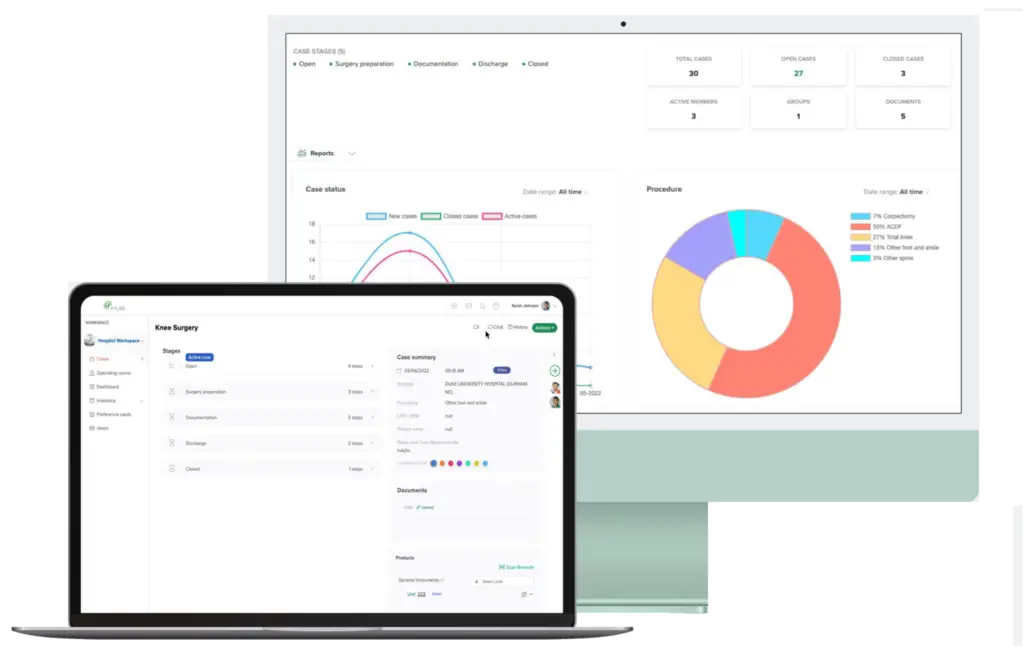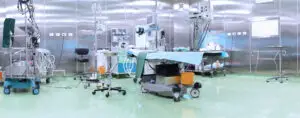The healthcare industry is constantly evolving, with new technologies, treatments, and regulations being introduced every day. As a result, the demand for efficient and effective healthcare distribution has never been higher. The healthcare distribution market, which includes healthcare logistics and supply chain management, plays a crucial role in ensuring that medical products and equipment reach their intended destinations in a timely and cost-effective manner. In this article, we will explore the current state of the healthcare distribution market, its revenue and share, and the key factors driving its growth. We will also delve into the challenges faced by the industry and the impact of the COVID-19 pandemic on the market.
The Healthcare Distribution Market: An Overview
The healthcare distribution market is a complex and highly regulated industry that involves the storage, transportation, and delivery of medical products and equipment. This includes pharmaceuticals, medical devices, and other healthcare supplies. The market is responsible for ensuring that these products reach hospitals, clinics, pharmacies, and other healthcare facilities in a safe and timely manner. It is a critical link between manufacturers and healthcare providers, ensuring that the right products are available at the right time and place.
According to a report by Grand View Research, the global healthcare distribution market size was valued at USD 1.2 trillion in 2020 and is expected to reach USD 1.8 trillion by 2028, growing at a CAGR of 6.2% during the forecast period. This growth can be attributed to the increasing demand for healthcare products, advancements in technology, and the rising prevalence of chronic diseases. The market is also being driven by the growing need for specialized and advanced distribution services due to the increasing complexity of healthcare products and treatments.
Healthcare Logistics: A Crucial Component of the Distribution Market
Healthcare logistics is a vital component of the healthcare distribution market. It involves the planning, implementation, and control of the flow of medical products and equipment from the point of origin to the point of consumption. This includes warehousing, inventory management, transportation, and tracking of products. It is a critical function that ensures the smooth operation of the healthcare system, enabling healthcare providers to deliver quality care to patients and facilitating coordinated care.
The global healthcare logistics market size was valued at USD 243.5 billion in 2020 and is expected to reach USD 463.9 billion by 2028, growing at a CAGR of 8.2% during the forecast period. The increasing demand for temperature-sensitive products, such as vaccines and biologics, is a major factor driving the growth of the healthcare logistics market. Additionally, the growing need for efficient and reliable logistics services due to the increasing complexity of healthcare products and treatments is also contributing to the market growth.
Healthcare Supply Chain: Ensuring Efficiency and Cost-Effectiveness
The healthcare supply chain is another crucial component of the distribution market. It involves the management of the entire process of sourcing, procurement, and delivery of medical products and equipment. The goal of the healthcare supply chain is to ensure that the right products are delivered to the right place at the right time, while also minimizing costs and maintaining quality. It is a complex process that requires careful coordination and management to ensure efficiency and effectiveness, often utilizing medical inventory management solutions.
The global healthcare supply chain market size was valued at USD 1.5 trillion in 2020 and is expected to reach USD 2.8 trillion by 2028, growing at a CAGR of 7.8% during the forecast period. The increasing focus on reducing healthcare costs and improving efficiency is a major factor driving the growth of the healthcare supply chain market. Additionally, the growing need for transparency and traceability in the supply chain due to increasing regulatory requirements and patient safety concerns is also contributing to the market growth.
Key Factors Driving the Growth of the Healthcare Distribution Market
Several factors are contributing to the growth of the healthcare distribution market. These include:
- Rising Demand for Healthcare Products: The global population is aging, and there is a growing demand for healthcare products and services. This is due to the increasing prevalence of chronic diseases, such as diabetes, cancer, and cardiovascular diseases. As a result, the demand for efficient and effective healthcare distribution is also increasing, further supporting care coordination. Furthermore, the growing focus on preventive care and wellness is also driving the demand for healthcare products, thereby boosting the growth of the healthcare distribution market.
- Advancements in Technology: The healthcare industry is constantly evolving, and new technologies are being introduced to improve the delivery of healthcare products. This includes the use of temperature-controlled packaging, real-time tracking systems, and automation in warehouses. These advancements are making the distribution process more efficient and reliable. Moreover, the increasing adoption of digital technologies, such as artificial intelligence and blockchain, in the healthcare distribution market is also expected to drive market growth, including advancements in medical imaging.
- Increasing Focus on Patient Safety: Patient safety is a top priority in the healthcare industry, and this extends to the distribution of medical products and equipment. As a result, there is a growing demand for temperature-controlled and tamper-proof packaging, as well as strict regulations for the transportation and handling of medical products. Additionally, the increasing focus on traceability and transparency in the healthcare supply chain to ensure patient safety is also driving the growth of the healthcare distribution market, enhancing healthcare communication.
- Growing Importance of Supply Chain Visibility: With the increasing complexity of the healthcare supply chain, there is a growing need for visibility and transparency. This includes real-time tracking of products, inventory management, and data analytics to identify areas for improvement and cost-saving opportunities, enhancing healthcare analytics. The increasing adoption of digital technologies for supply chain visibility is also expected to contribute to the growth of the healthcare distribution market.
Challenges Faced by the Healthcare Distribution Market
While the healthcare distribution market is experiencing significant growth, it also faces several challenges. These include:
- Stringent Regulations: The healthcare industry is highly regulated, and this extends to the distribution of medical products. Companies must comply with strict regulations for the transportation, storage, and handling of these products, which can be a costly and time-consuming process. Moreover, the regulations vary across different countries and regions, adding to the complexity and cost of compliance.
- Lack of Standardization: The lack of standardization in the healthcare industry can lead to inefficiencies and errors in the distribution process. This includes variations in packaging, labeling, and tracking systems, which can make it difficult to ensure the safety and timely delivery of products. The need for harmonization and standardization of processes and systems in the healthcare distribution market is a major challenge that needs to be addressed.
- High Costs: The healthcare distribution market is a capital-intensive industry, with high costs associated with warehousing, transportation, and technology. This can be a barrier for smaller companies looking to enter the market. Moreover, the increasing cost of compliance with regulatory requirements and the need for investment in advanced technologies and systems are also adding to the cost pressures faced by companies in the market.
Conclusion
The healthcare distribution market is a crucial component of the healthcare industry, responsible for ensuring the safe and timely delivery of medical products and equipment. With the increasing demand for healthcare products, advancements in technology, and the focus on patient safety and supply chain visibility, the market is expected to continue its growth trajectory. However, companies must also address the challenges faced by the industry, such as stringent regulations and high costs, to maintain their competitive edge. The impact of the COVID-19 pandemic has underscored the importance of a resilient and efficient healthcare distribution system, and it is expected to drive further innovation and transformation in the market.
HUB Healthcare
HUB Healthcare offers a unique platform for connecting with healthcare providers and distributors, functioning as a comprehensive care coordination platform. It also supports patient management software and ensures integrated healthcare solutions by providing tools for efficient healthcare document management. Furthermore, HUB Healthcare’s advanced systems ensure compliance with a compliance management system and offer capabilities akin to medical case management software.







